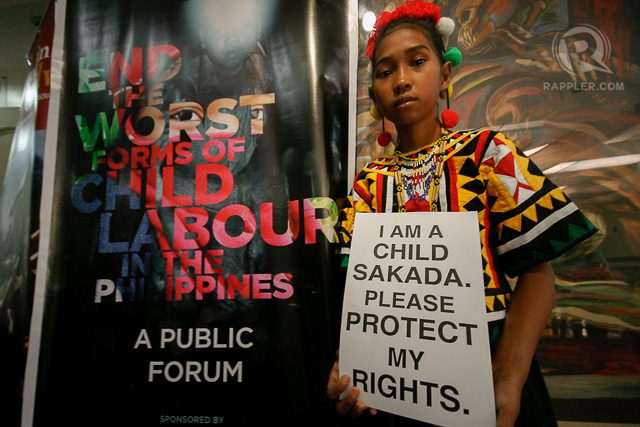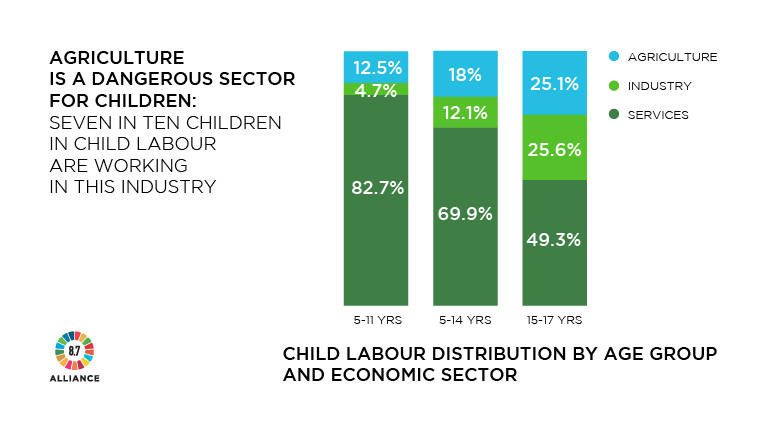SUMMARY
This is AI generated summarization, which may have errors. For context, always refer to the full article.

MANILA, Philippines – Despite major gains in minimizing child labor, there remains 152 million children engaged in forced work according to the new report by the International Labor Organization (ILO) released Tuesday, September 19.
The new ILO research, conducted together with the Walk Free Foundation and the International Organization for Migration, said that this figure accounts for almost 1 in 10 children globally. Some 88 million of this number are boys.
Half or 73 million children are engaged in hazardous labor that “directly endangers their health, safety and moral development.” Children aged 5 to 11 years old make up the largest share of child workers and those engaged in hazardous work
The report noted that there has been a 94 million decline in child labor estimates since the year 2000 but the challenge of eliminating this global issue continues. Ending child labor is goal number 8 in the 15-point Sustainable Development Goals (SDG) set by the United Nations (UN). The UN committed to address this specific goal by 2025.
Prominence in Africa and Asia
Most of the children involved in forced labor are in Africa and the Asia Pacific with 9 out of 10 of the global estimates coming from these regions. Here are the number of child laborers per region:
- Africa – 72 million
- Asia and the Pacific – 62 million
- America – 11 million
- Europe and Central Asia – 6 million
- Middle East – 1 million
In the Philippines, there are around 2. 7 million kids working for their families based on the latest estimates of the Philippine Statistics Authority. (READ: Gov’t, ILO vow to free 1 million kids from child labor)
The agriculture sector still accounts for the largest share or child workers at 71%. Meanwhile, more than 60% of them are workers for family enterprises.

“These numbers underscore an important broader point concerning the nature of child labour in the world today. Most children in child labour are not in an employment relationship with a third-party employer, but rather work on family farms and in family enterprises,” the study said.
Meanwhile, the research also found a strong link between conflict and child labor.
Countries affected with armed conflict has a 77% higher incidence of child labor compared to the global average.

“This situation underscores the importance of prioritizing child labour within humanitarian responses and during reconstruction and recovery; governments, workers’ and employers’ organizations, and humanitarian actors all have a critical role to play in this context,” said the study.
Rappler earlier reported that children have been recruited by the terrorist Maute Group to serve as gunfighters. The notorious IS-linked group is currently in a war with state forces as they tried to occupy Marawi City. The conflict is now in its 4th month with thousands of families displaced from their homes.
Moving forward
To ensure the achievement of this SDG, the study urged governments to integrate policy response to child labor in their national development efforts. It encouraged policymakers to stop treating child labor as an isolated issue and to mainstream it into national policies.
They also encouraged specialize responses to the specific “gender, age and regional dimensions of child labor.”
“Differences between boys and girls in terms of the extent and nature of their involvement in child labour underscore the continuing relevance of policy measures that address the role of gender in determining whether children are sent to work and the risks they face once there,” said the report.
“In regional terms, Africa, where child labour is highest in both proportionate and absolute terms, and where progress has stalled, remains a particular priority,” it added.
Ultimately, the 3 organizations behind the study called for an international cooperation in combating child labor through Alliance 8.7.
The global partnership launched in 2015 seeks to focus on conducting research, knowledge sharing, boosting resources and actions in ending child labor.
“In many countries, the cost of required action far exceeds available government resources, meaning that international resource mobilization will also be imperative to success against child labour,” the study said.
“Children who are free from the burden of child labour are able to fully realize their rights to education, leisure, and healthy development, in turn providing the essential foundation for broader social and economic development, poverty eradication, and human rights,” it added. – Rappler.com
Add a comment
How does this make you feel?
There are no comments yet. Add your comment to start the conversation.